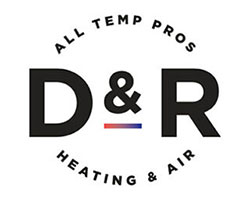When the weather starts to cool off, you might be thinking about how you’ll prepare your heating and cooling. After all, HVAC costs routinely add up to a large piece of your monthly electric bill. To figure out new ways to reduce costs, some homeowners take a closer look at their thermostat. Is there a setting they should use to improve efficiency?
Most thermostats have a ‘Fan’ or ‘Fan On’ setting. But if the fan is going during a regular cycle, what does the fan setting offer for an HVAC system? This guide can help. We’ll review precisely what the fan setting is and how you can use it to cut costs over the summer or winter.
How Do I Access the Fan Setting on My Thermostat?
For most thermostats, the fan setting signifies that the air handler’s blower fan remains on. A few furnaces will run at a low level in this setting, but for the most part heating or cooling isn’t being generated. The ‘Auto’ setting, conversely, will turn on the fan during a heating or cooling cycle and shut it off when the cycle is finished.
There are advantages and disadvantages to switching on the fan setting on your thermostat, and the ideal option {will|can|should]] depend on your personal comfort needs.
Advantages to trying the Fan/On setting:
- You can keep the temperature throughout your home more balanced by enabling the fan to keep generating airflow.
- Indoor air quality can increase as continuous airflow will keep moving airborne contaminants into the air filter.
- Fewer start-stop cycles for the blower fan helps lengthen its life span. As the air handler is often connected to the furnace, this means you could avoid needing furnace repair.
Drawbacks to switching to the Fan/On setting:
- A constant fan can add to your energy costs slightly.
- Nonstop airflow can clog your air filter soon, increasing the frequency you’ll need to replace it.
Should My Thermostat Be on? Fan or Auto in Summer/Winter
Through the summer, warm air will sometimes linger in unfinished spaces like the attic or an attached garage. If you keep the fan running, your HVAC system might gradually move this warm air into the rest of your home, compelling the HVAC system to work harder to keep up with the preferred temperature. In extreme heat, this could result in needing AC repair more regularly as wear and tear grows.
The reverse can occur over the winter. Cooler spaces such as a basement will hold onto cooler air, which can eventually drift into the rest of your home. Keeping the fan on may pull more cold air upward, increasing the amount of heating you need to keep warm.
If you’re still trying to decide if you should try the fan/on setting, keep in mind that every home and family’s comfort needs are not the same. Leaving the HVAC system’s fan on may be ideal for you if:
Someone in your household suffers from allergies. Allergies and similar respiratory conditions can be tough on the family. Leaving the fan on is more likely to increase indoor air quality, helping your family breathe easier.
Your home has hot and cold spots. All kinds of homes wrestle with persistent hot and cold spots that quickly shift to a temperature different from the rest of the house. The fan setting should help minimize these changes by steadily refreshing each room’s airflow.
